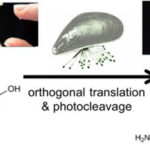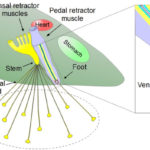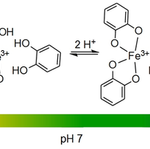Expanding the DOPA Universe with Genetically Encoded, Mussel-Inspired Bioadhesives for Material Sciences and Medicine
Sticky problems? We highlight current efforts to design and engineer mussel‐inspired, DOPA‐containing bioadhesives with production by microbial strains. We discuss the in vivo use of orthogonal translation with expanded genetic codes and reprogrammed microbial strains as new tools in bioinspired material science to produce useful protein‐based polymers with spatiotemporal control over their adhesive properties. Catechols are a biologically relevant group of aromatic diols that have attracted much attention as mediators of adhesion of “bio‐glue” proteins in mussels of the genus Mytilus. These organisms use catechols in the form of the noncanonical amino acid l‐3,4‐dihydroxyphenylalanine (DOPA) as a building block for adhesion proteins. The DOPA is generated post‐translationally from tyrosine. Herein, we review the properties, natural occurrence, and reactivity of catechols in the design of bioinspired materials. We also provide a basic description of the mussel’s attachment apparatus, the interplay between its different molecules that play a crucial role in adhesion, and the role of post‐translational modifications (PTMs) of these proteins. Our focus is on the microbial production of mussel foot proteins with the aid of orthogonal translation systems (OTSs) and the use of genetic code engineering to solve some fundamental problems in the bioproduction of these bioadhesives and to expand their chemical space. The major limitation of bacterial expression systems is their intrinsic inability to introduce PTMs. OTSs have the potential to overcome these challenges by replacing canonical amino acids with noncanonical ones. In this way, PTM steps are circumvented while the genetically programmed precision of protein sequences is preserved. In addition, OTSs should enable spatiotemporal control over the complex adhesion process, because the catechol function can be masked by suitable chemical protection. Such caged residues can then be noninvasively unmasked by, for example, UV irradiation or thermal treatment. All of these features make OTSs based on genetic code engineering in reprogrammed microbial strains new and promising tools in bioinspired materials science.
Learn about our two Decals!
 Click here to find out more about our Fall Bioinspired Design Decal and our Spring Bioinspired Design in Action Decal – ALL MAJORS are welcome.
Click here to find out more about our Fall Bioinspired Design Decal and our Spring Bioinspired Design in Action Decal – ALL MAJORS are welcome.Berkeley BioDesign Community
 Click here to learn about the BioD: Bio-Inspired Design @ Berkeley student organization or here to signup for more info.
Click here to learn about the BioD: Bio-Inspired Design @ Berkeley student organization or here to signup for more info.Search
Student Login






I imagine that the neurological circuits underlying these processes are governed by both 2d spacing maps with their brains as…
to reduce the impact of car accidents, it may be possible to study the force diverting physics of cockroaches to…
you see this type of head-bobbing stability in many avian creatures related to pigeons like chickens. the head ability to…
not like they taught horses how to run! this is an example of convergent evolution where both sea creatures and…
The brain functions in a similar way with neuronal connections. our brains are able to utilize the multiplicity of connections…